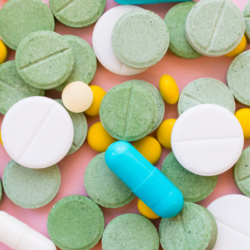Cold therapy, once an ancient healing and recovery practice recovery has become a popular topic of discussion in the world of health and well-being. From sports stars to holistic healers, many are advocating ‘The Benefits of Cold Therapy’. So what’s all the fuss about? In this article, we’ll break it down and explain it in detail.
Reduced inflammation
Perhaps one of the greatest benefits of cold therapy is its ability to reduce inflammation. How does this work? Exposure to cold causes vasoconstriction reducing the blood supply to the area, which in turn can reduce swelling and inflammation. In fact, studies show that cold therapy can effectively reduce inflammation (Reference: PMID: 36308505).
Practical application
Imagine finishing an intense training session and feeling the stabbing pain of tired, aching muscles. Instead of resorting to over-the-counter painkillers, you could immerse yourself in a bath of cold water or apply a cold compress cold compress on painful areas. This is one of the most common practical applications of cold therapy.
Comparison between heat therapy and cold therapy
| Criteria | Hot therapy | Cold therapy |
|---|---|---|
| Main objective | Muscle relaxation, increased blood circulation | Reduction of inflammation, pain relief |
| Typical applications | Chronic muscle pain, stiffness, relaxation | Acute injuries, inflammation, recovery from exercise |
| Mechanism of action | Dilates blood vessels, relaxes tissue | Reduction in blood flow, decrease in metabolic activity |
| Duration of application | 15-20 minutes generally | 10-15 minutes, depending on sensitivity and body reaction |
| Precautions | Do not use on acute injuries, inflammation or oedema | Do not use on stiff muscles or chronic pain |
| Side effects | Risk of burns if too hot | Risk of frostbite or hypothermia if too cold or applied for too long |
| Examples of use | Hot water bottles, hot baths, hot compresses | Ice packs, cold water baths, cold compresses |
| When to avoid | In case of recent injury, acute inflammation | On areas with poor circulation, in the case of certain health problems such as Raynaud’s disease |
| Additional benefits | Improved flexibility, sleep aid | Reduces swelling, improves muscle recovery |
Improved mental health
Another potential benefit of cold therapy is that it can help to improve the health mental health. Some researchers suggest that exposure to cold may increase the production of endorphins, neurotransmitters that can help reduce stress and improve mood. In addition, research suggests that exposure to cold may increase the production of endorphins, helping to improve mood (Reference : PMID: 9518606).
- Research in progress
While many individuals and practitioners report improvements in mood and mental well-being following cold therapy sessions, research on this topic is still ongoing. Nevertheless, preliminary results are promising and could pave the way for new approaches to managing stress and anxiety.
Stimulation of the immune system
Cold therapy could also stimulate the immune system. Preliminary studies suggest that exposure to cold may increase the production of white blood cells, the body’s defence cells against infection. In fact, according to some studies, exposure to cold may strengthen the immune system by increasing the production of white blood cells (Reference: PMC9518606).
- Potential benefits
Stimulating the immune system through cold therapy can help protect against common illnesses such as colds and flu. It may also help to strengthen the body’s overall resilience to infection and disease.
Improved blood circulation
Exposure to cold can improve blood circulation. This is because the cold causes vasoconstriction, which encourages the blood to circulate more quickly and efficiently to maintain body temperature.
Impact on well-being
Better blood circulation means a better supply of oxygen and nutrients to the body’s cells. This can promote better overall health, improve physical performance, and even aid recovery after exercise.
Improved sleep
Cold therapy may also improve sleep quality. How does it work? The body tends to sleep better in cooler environments. By lowering the body’s temperature before going to sleep, we can promote deeper, more restful sleep.
- Everyday application
Consider the potential of cold therapy to improve your sleep. Whether you take a cold shower before bed or lower the temperature in your bedroom, these small changes can help improve the quality of your sleep.
Metabolic boost
Cold therapy can boost the metabolism, which can help with weight loss. The body needs to burn calories to maintain its temperature, so exposure to cold can lead to an increase in the number of calories burned. In fact, cold therapy is also known to stimulate the metabolism, a key factor in weight management (Reference: PMC9953392)
- Towards effective weight loss
So how can cold therapy help you lose weight? By increasing metabolism, the body burns more energy and therefore more calories. This can help create a calorie deficit, which is necessary for weight loss. We’ve covered a number of the benefits of cold therapy, but there’s still much more to explore. In the next section, we’ll look at other benefits, such as improved skin and hair health, as well as improved sporting performance.
Improved skin health
Cold therapy can have beneficial effects on skin health. Exposure to cold can help to tighten pores, reduce swelling and redness, and improve the overall appearance of the skin.
- Natural beauty
Thanks to these effects, cold therapy can be a valuable addition to your beauty routine. Whether you use a chilled facial roller or finish your shower with a blast of cold water, these methods can contribute to firmer, more radiant skin.
Improved hair health
As well as benefits for the skin, it can also improve hair health. How does it work? Cold water can help tighten hair cuticles, which can make them shinier and less prone to damage.
- Shine and strength
By rinsing your hair with cold water after shampooing, you can help seal hair cuticles, which contributes to shine and strength. This simple change in your hair routine can make a big difference to the health of your hair.
Improved athletic performance
Cold therapy is increasingly being used in the world of sport and athletic performance. Athletes often use cold therapy to recover faster from training, reduce inflammation and muscle soreness, and improve overall performance.
- An asset for athletes
Whether you’re a professional or amateur athlete, cold therapy could be an excellent addition to your training programme. By helping to speed up recovery and improving performance, cold therapy could help you achieve your athletic goals more quickly.
How do I use cold therapy at home?
Despite its power, it can be simple to carry out at home. You don’t necessarily need state-of-the-art equipment or access to a cryotherapy room to benefit from it. Let’s look at how to put it into practice.
Cold packs
Cold packs like the Therapearl Color Shoulder and Cervical Thermal Pack are practical tools for applying cold therapy at home. These flexible, reusable bags can be used to relieve pain by bringing cold to specific areas of the body. Thanks to their THERA PEARL beads, you can easily see the temperature of the bag. The bag is perfectly adaptable to your body and can effectively relieve shoulder, trapezius and neck pain.
Relaxing Cryo Gels
STC Cryo-relief Gel is another fantastic product you can use at home. This gel, specially formulated to reduce feelings of tiredness and heaviness, soothes muscle and joint pain and provides a sensation of intense cold. Easy to use and offering fast, effective results, STC Cryo Gel is ideal for helping you recover quickly after exercise.
Thermal pads
Thermal pads like the Actipoche Multi-Zone Thermal Pad are also a great way to enjoy cold therapy at home. They can be used to quickly relieve pain using heat or cold. The Actipoche is ultra-flexible and provides an immediate soothing effect. Whether you’re suffering from muscle pain, backache, stiff neck, lumbago or periodic aches and pains, this thermal cushion can be a great help.
Cold showers
The power of cold showers should not be underestimated either. They can help improve blood circulation, stimulate the immune system and improve skin and hair health.
Cold footbaths
Finally, cold footbaths are another simple and effective way to practise cold therapy at home. They can help relieve foot pain and swelling, stimulate blood circulation and promote better overall health.
Precautions to take when using cold therapy
Although cold therapy has many benefits, it is important to approach it with caution, especially for people with certain medical conditions or sensitivities. Here are some essential precautions to bear in mind:
- Prior medical consultation: Before starting any form of cold therapy, it is advisable to consult a doctor, especially if you suffer from heart problems, circulatory disorders, high blood pressure or any other pre-existing medical condition.
- Duration and intensity: It’s crucial to start with short sessions, especially if you’re new to cold therapy. Gradually increase the duration and intensity to allow your body to adapt.
- Monitor your body’s reactions: Pay attention to the signs on your body during and after the sessions. If you feel intense pain, abnormal numbness or excessive discomfort, it is important to stop the therapy immediately.
- Avoid extremes: Avoid extremely low temperatures or prolonged immersion without professional supervision. The risk of hypothermia and cold injuries increases with prolonged exposure.
- Do not apply directly to the skin: When using cold compresses, it is advisable to wrap them in a cloth to avoid direct contact with the skin and prevent cold burns.
- Take care with children and the elderly: Children and the elderly should approach cold therapy with particular caution, as they are more sensitive to extreme temperatures.
- Hydration: Make sure you stay well hydrated before and after cold therapy sessions, as the body can lose a significant amount of fluids.
- Pregnant women: Pregnant women should avoid cold therapy or consult a doctor before trying it.
By following these recommendations, you can enjoy the benefits of cold therapy while minimising the risks. Remember that everyone reacts differently to cold and it’s important to listen to your body and proceed with caution.
What is the Wim Hof method?
If you’re interested in cold therapy, chances are you’ve heard of the Wim Hof method. Named after its creator, Wim Hof, often referred to as the “Iceman”, this method combines breathing, meditation and exposure to cold to improve health and well-being. The Wim Hof method, combining breathing, meditation and exposure to the cold, offers significant benefits for health and well-being.
Who is Wim Hof?
Wim Hof is a Dutch adventurer who has set various world records for cold resistance. He is famous for exploits such as climbing Mount Kilimanjaro in shorts and remaining submerged in ice for almost two hours. Hof attributes his resistance to the cold to a technique he developed and named after himself.
Wim Hof breathing
Wim Hof breathing is one of the pillars of this method. It consists of a series of deep, rapid breaths, followed by a period of air retention. The idea is to hyperoxygenate the body, which can have a number of beneficial effects, such as increasing energy, improving the immune system and reducing stress.
Exposure to cold
Another pillar of the Wim Hof method is exposure to cold. Hof suggests starting with cold showers, then progressing to more intense ice baths. Exposure to the cold, according to Hof, can help improve blood circulation, strengthen the immune system and increase tolerance to the cold.
Meditation
The final pillar of the Wim Hof method is meditation. Hof proposes a simple form of meditation that can help to strengthen the mind-body connection increase concentration and reduce stress.
References:
- https://www.ncbi.nlm.nih.gov/pmc/articles/PMC9518606/
- https://www.ncbi.nlm.nih.gov/pmc/articles/PMC9953392/
- https://pubmed.ncbi.nlm.nih.gov/36308505/





